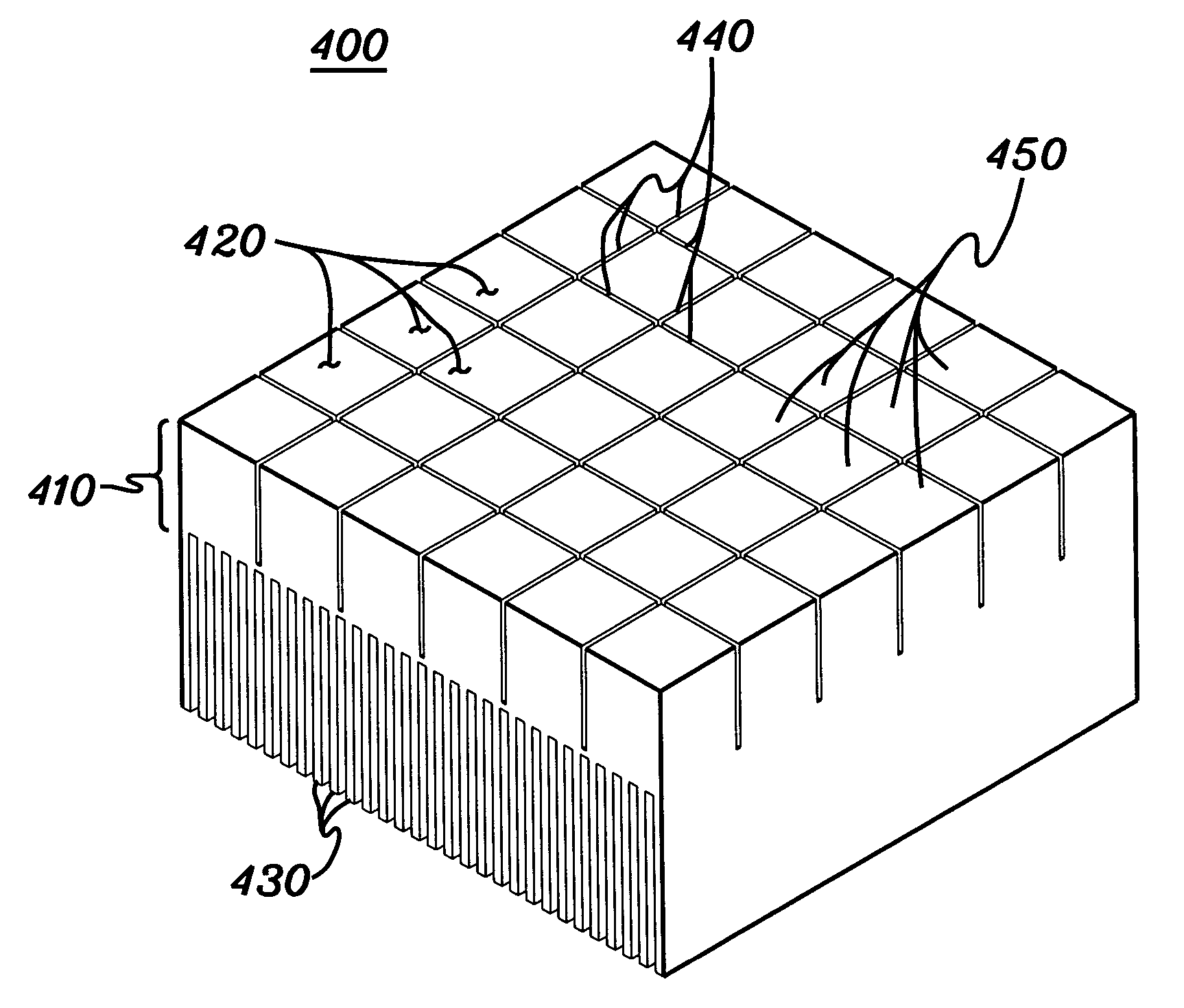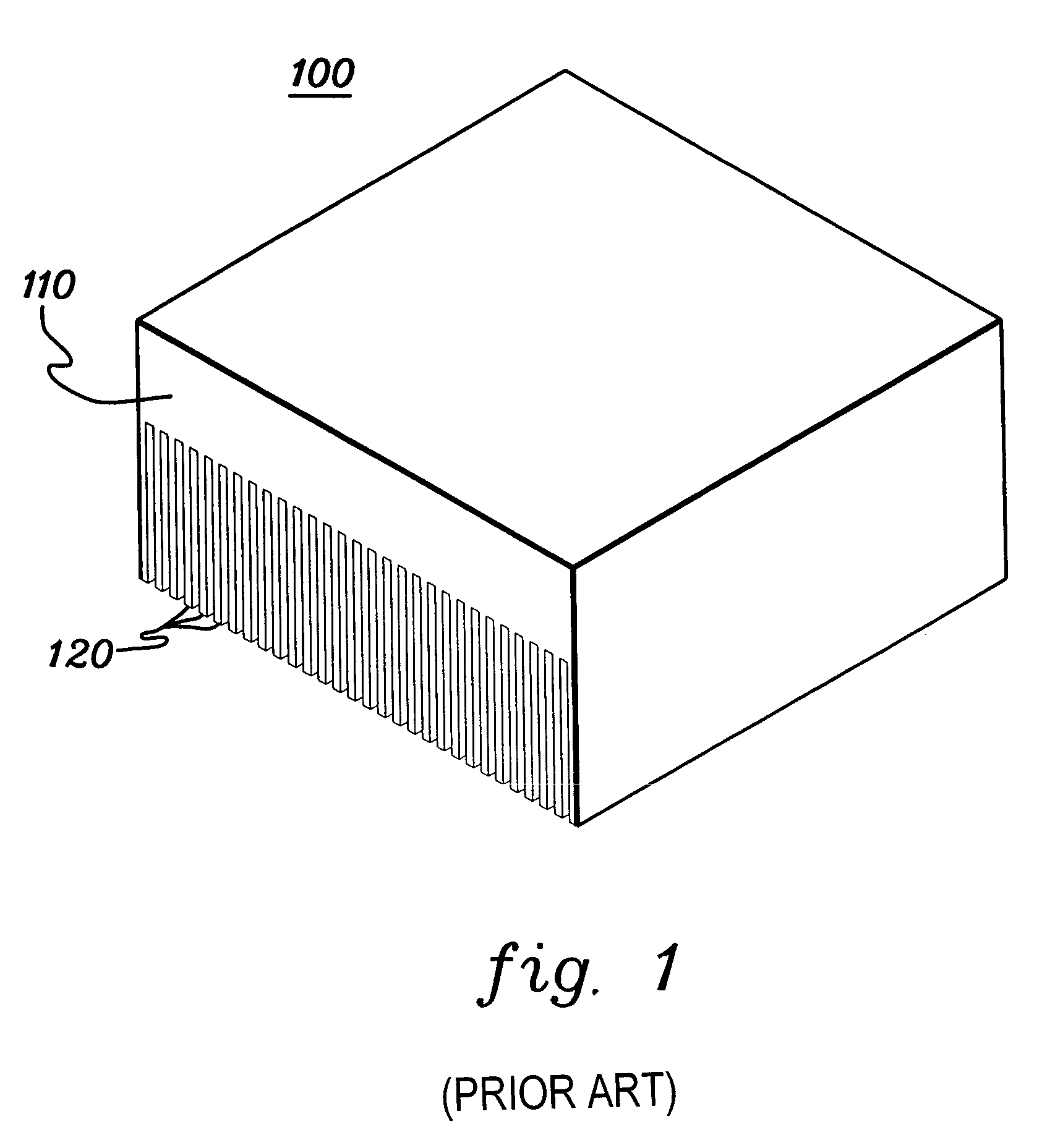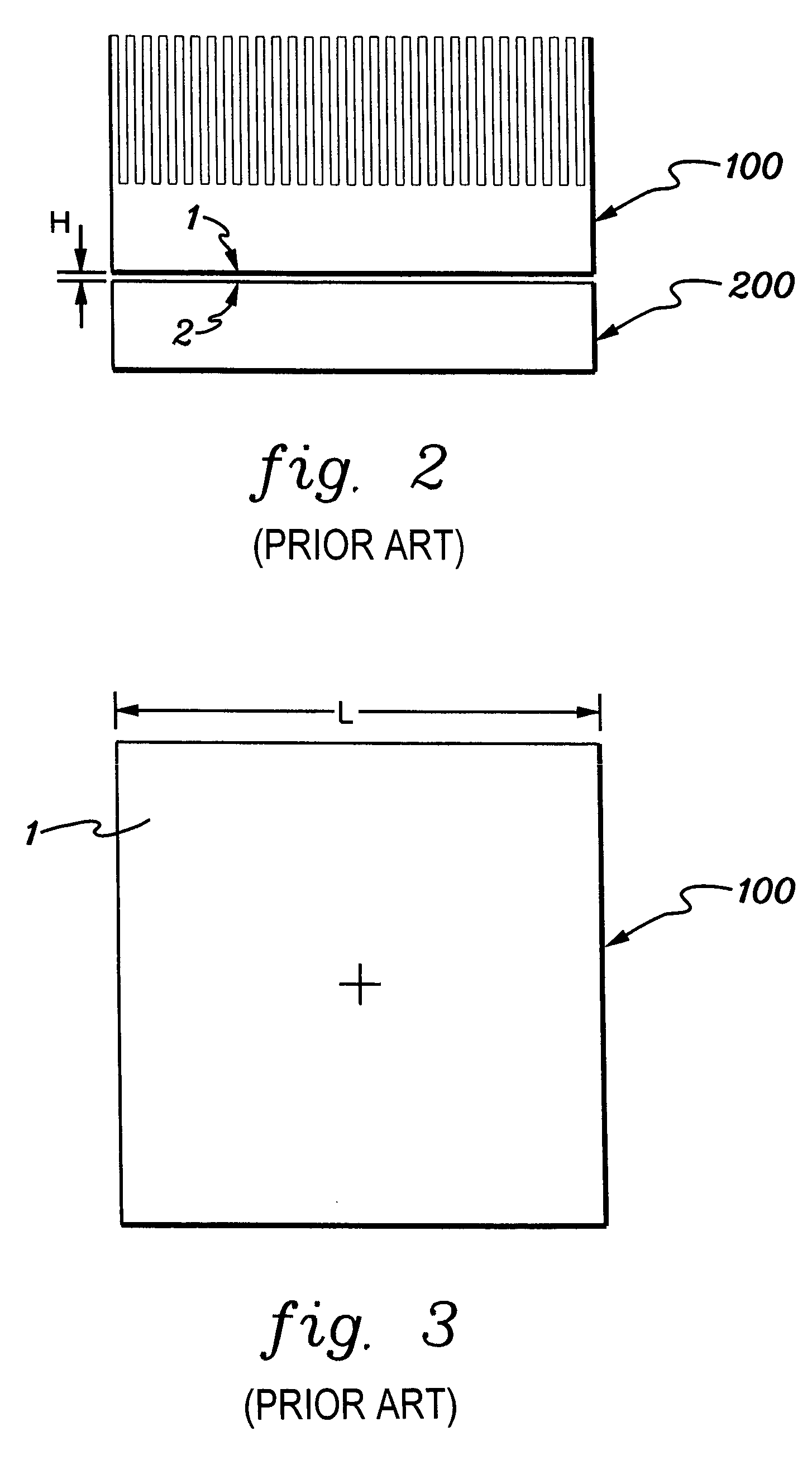Thermal dissipation structure and method employing segmented heat sink surface coupling to an electronic component
a heat sink surface and heat dissipation structure technology, applied in semiconductor devices, cooling/ventilation/heating modifications, lighting and heating apparatus, etc., can solve problems such as interface fracturing, difficult use of solder or epoxy bonding attaching material, and increase the cost of heat dissipation, so as to facilitate the removal of heat from the electronic component, improve the thermal dissipation structure, and reduce the shear stress within the bond
- Summary
- Abstract
- Description
- Claims
- Application Information
AI Technical Summary
Benefits of technology
Problems solved by technology
Method used
Image
Examples
Embodiment Construction
[0017]As used herein, “electronic component” comprises any heat generating component of, for example, a computer system or other electronics system requiring cooling. The term includes one or more integrated circuit devices, electronic devices, or electronic modules, either with or without a thermal cap or thermal spreader.
[0018]FIG. 1 depicts one embodiment of a conventional heat sink, generally denoted 100, for use with an electronic component. In this example, heat sink 100 is a monolithic structure which includes a base 110 from which a plurality of fin plates 120 extend to facilitate heat transfer from the heat sink to the surrounding environment. Typically heat sink 100 is made of aluminum (Al) or copper (Cu), both of which closely match the coefficient of thermal expansion of the electronic component surface to which the heat sink is to be attached (which is assumed to also comprise a metal).
[0019]As noted, certain advantages can be realized by transitioning the heat sink mat...
PUM
 Login to View More
Login to View More Abstract
Description
Claims
Application Information
 Login to View More
Login to View More - R&D
- Intellectual Property
- Life Sciences
- Materials
- Tech Scout
- Unparalleled Data Quality
- Higher Quality Content
- 60% Fewer Hallucinations
Browse by: Latest US Patents, China's latest patents, Technical Efficacy Thesaurus, Application Domain, Technology Topic, Popular Technical Reports.
© 2025 PatSnap. All rights reserved.Legal|Privacy policy|Modern Slavery Act Transparency Statement|Sitemap|About US| Contact US: help@patsnap.com



